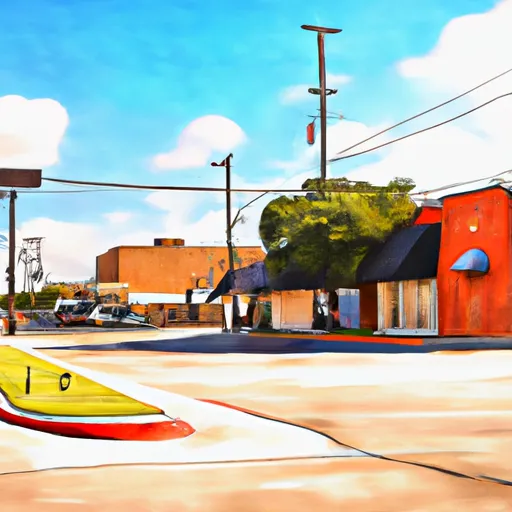-
 Snoflo Premium
Snoflo Premium
Get unlimited access to all our content
With no Ad interruptions! - Start Your Free Trial Login with existing account
Marquez
Eden Index
Climate
8.3
•
Recreation
2.1
•
Community
•
Safeguard
4.0/10

Marquez, Texas is a small rural community located in Leon County, situated in the eastern part of the state. The region experiences a humid subtropical climate characterized by hot summers and mild winters. Summers are typically hot and humid, with temperatures often exceeding 90°F (32°C), while winters are generally mild, with temperatures rarely dropping below freezing.
In terms of hydrology constituents, Marquez is home to several small creeks that contribute to the watershed of the Trinity River. These creeks provide a source of freshwater and support local ecosystems.
The area surrounding Marquez offers numerous outdoor recreation opportunities. The nearby Fort Boggy State Park provides a picturesque setting for camping, hiking, fishing, and boating. Visitors can explore the park's trails, relax by the lake, or go birdwatching. Additionally, the nearby national forests, such as Davy Crockett and Sam Houston, offer opportunities for hunting, fishing, and wildlife viewing.
Marquez, Texas, with its pleasant climate, local waterways, and proximity to nature reserves, provides ample opportunities for individuals to enjoy a variety of outdoor activities in a serene and natural environment.
What is the Eden Index?
The Snoflo Eden Index serves as a comprehensive rating system for regions, evaluating their desirability through a holistic assessment of climate health, outdoor recreation opportunities, and natural disaster risk, acknowledging the profound impact of these factors on livability and well-being.
Climate Health Indicator (CHI): 8.3
Marquez receives approximately
1018mm of rain per year,
with humidity levels near 84%
and air temperatures averaging around
20°C.
Marquez has a plant hardyness factor of
8, meaning
plants and agriculture in this region tend to thrive here all year round.
By considering the ideal temperature range, reliable water supplies, clean air, and stable seasonal rain or snowpacks, the Climate Health Indicator (CHI) underscores the significance of a healthy climate as the foundation for quality living.
A healthy climate is paramount for ensuring a high quality of life and livability in a region, fostering both physical well-being and environmental harmony. This can be characterized by ideal temperatures, reliable access to water supplies, clean air, and consistent seasonal rain or snowpacks.
Weather Forecast
Streamflow Conditions
Lower Brazos
Area Rivers
Lower Brazos
Snowpack Depths
Lower Brazos
Reservoir Storage Capacity
Lower Brazos
Groundwater Levels
Recreational Opportunity Index (ROI): 2.1
The Recreational Opportunity Index (ROI) recognizes the value of outdoor recreational options, such as parks, hiking trails, camping sites, and fishing spots, while acknowledging that climate plays a pivotal role in ensuring the comfort and consistency of these experiences.
Access to outdoor recreational opportunities, encompassing activities such as parks, hiking, camping, and fishing, is crucial for overall well-being, and the climate plays a pivotal role in enabling and enhancing these experiences, ensuring that individuals can engage in nature-based activities comfortably and consistently.
Camping Areas
| Campground | Campsites | Reservations | Toilets | Showers | Elevation |
|---|---|---|---|---|---|
| Navasota RV Park | 10 | 221 ft | |||
| Public Use Area 2 - Groesbeck | None | 421 ft | |||
| Gibbons Creek Reservoir | 27 | 255 ft | |||
| Stephen Austin State Park | 78 | 135 ft | |||
| Public Use Area 3 - Groesbeck | None | 382 ft | |||
| Fairfield Lake State Park | 135 | 382 ft | |||
| Public Use Area 5 - Thornton | None | 369 ft |
Nearby Ski Areas
Catastrophe Safeguard Index (CSI):
The Catastrophe Safeguard Index (CSI) recognizes that natural disaster risk, encompassing floods, fires, hurricanes, and tornadoes, can drastically affect safety and the overall appeal of an area.
The level of natural disaster risk in a region significantly affects safety and the overall livability, with climate change amplifying these risks by potentially increasing the frequency and intensity of events like floods, fires, hurricanes, and tornadoes, thereby posing substantial challenges to community resilience and well-being.
Community Resilience Indicator (CRI):
The Community Resilience Indicator (CRI) recognizes that education, healthcare, and socioeconomics are crucial to the well-being of a region. The CRI acknowledges the profound impact of these elements on residents' overall quality of life. By evaluating educational resources, healthcare accessibility, and economic inclusivity, the index captures the essential aspects that contribute to a thriving community, fostering resident satisfaction, equity, and social cohesion.

